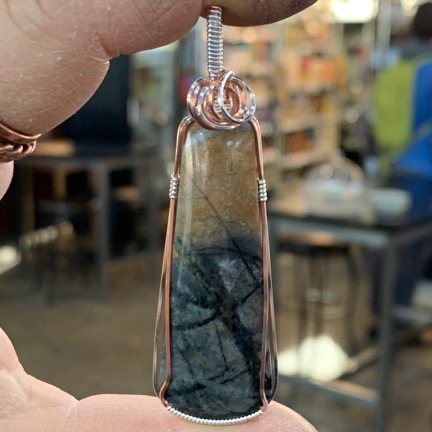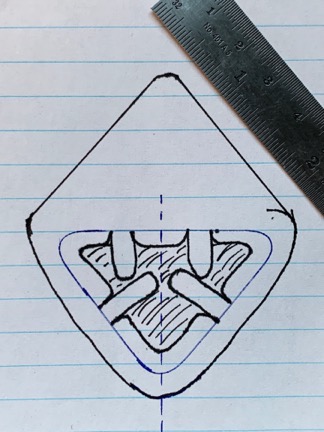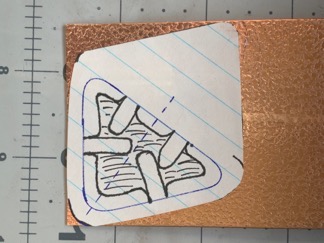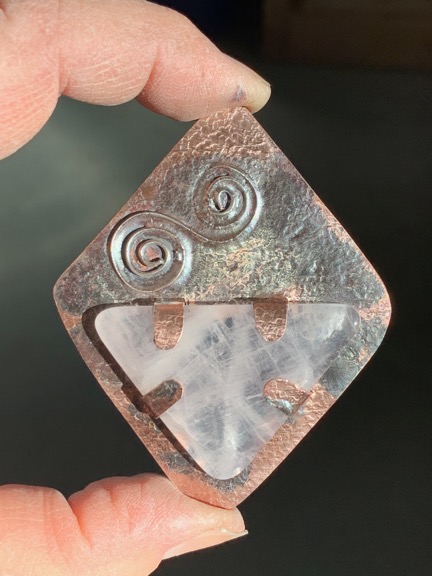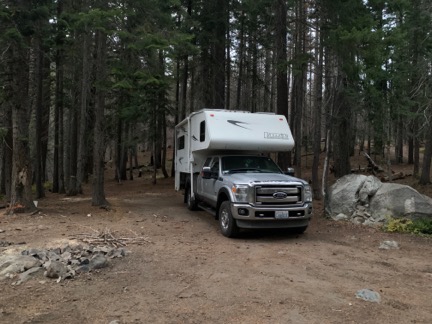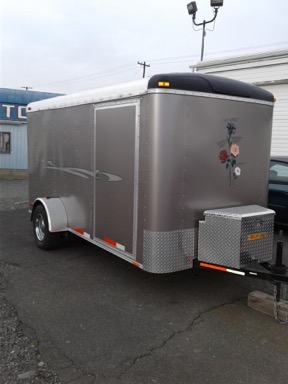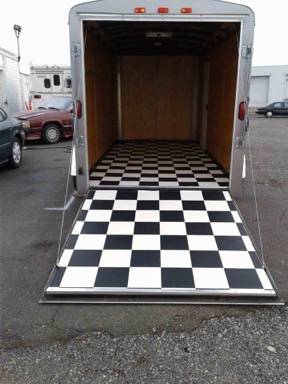I take delivery of a new used cargo trailer for my mobile jewelry shop.
My October trip to Tacoma, which I cover in another blog post, was the first half of a two-part trip. The second half was a stop in Yakima to pick up a trailer I’d seen there back in September. I’d told the owner, a guy named Mike who owned the local Lance dealership, that I’d be there around 11 AM on Monday. It was Sunday afternoon when I finished my business in Tacoma.
Researching the Trip
I’d originally planned to spend another night behind TMAC, but since there was nothing really appealing about the place as a campsite, I figured I get started on my way to Yakima that afternoon and camp along the way.
I did some homework. First, I checked out the most direct route which, I as expected, had me going through Chinook Pass near Mt. Rainier. Chinook is usually the first pass to close every winter. WADOT reported that it was still open with no restrictions. There was a slight chance of snow that day, so I knew I’d have to check again later.
Then I looked for a campsite. I have an app (Ultimate CG) that lists all public land camping areas. I didn’t want to be too close to the pass because I didn’t want to have to run the heater all night with the cooler temperatures at altitude. It took time — a surprising number of campgrounds were already closed for the season. I found a campground near Naches called Cottonwood that was open year-round and picked that as a destination.
After class, I walked Penny, secured loose items in the camper, and climbed into the truck. I checked Chinook Pass again; it was still clear with no restrictions. It was nearly 5 PM when I rolled out of the parking area and started on my trip to a destination 73 miles away.
The Trip to Yakima
It was freeway driving until I got off of Route 18 and headed toward Mt. Rainier. Eventually, I passed through the last town and started climbing on a two-lane road that wound through the forest. Although the weather was overcast and the light was disappointing, I enjoyed views of autumn colors all around me, especially the bright yellow larches. Unfortunately, the road was full of frost heave bumps that forced me to drive 5 to 10 miles below the speed limit. Google Maps kept adjusting my arrival time. When I still had cell service, I asked Siri what time sunset was at Yakima. 6:15, she reported. Google told me that I would not arrive until 6:45 PM.
I passed a few spots where I knew I could find a campsite in the National Forest. I was eager to get over the pass that day in case it snowed overnight. I didn’t want to have to start the next morning by backtracking to a different pass. So I kept going.
Clouds hid Mt. Rainier at a view point I passed. Soon I was climbing up into those clouds. The fog got thick on the narrow road. The pavement was wet. The outside temperature was only 39° then 37°. I slowed down even more. The guy in front of me speeded away and the guy behind me got closer, but there was nowhere to pull over to let him pass.
I didn’t realize I was near the pass until I saw the sign for the parking area for the little lake up there. I couldn’t see the lake or the mountain peaks I knew were beyond it. I couldn’t even see the parking area. Then I drove under the underpass right at the top of the pass. I knew there was a parking area to my right and I pulled into it so the guy behind me could pass. The air was already clearing; the clouds were mostly caught up on the west side of the mountains. The guy passed and I got back on the road, now able to see quite well.
But it was getting late; sunset was only minutes away. I still had 30 miles to go. As I came down the east side of the mountains, I began looking for an alternative place to spend the night. I passed a few closed campgrounds and then came upon an area where gravel roads led off to the left or right. There was a bridge over a creek and a road just before it. I slowed down but was going too fast to stop. It didn’t matter; there were people camping in there anyway. But on the other side of the creek was another turn. I stopped just past it, backed up a little, and drove in.
The Perfect Campsite
There was a flat area just off the road that would have been okay to camp in — if I didn’t mind being right next to the road. But beyond that was a short steep hill with an empty campsite beyond it. I got out to take a look. If I could get the truck up the hill, there was plenty of level space for me. I got back in and drove up the incline. It was no problem for my big 4WD truck. I spotted a perfectly flat area cleared of all forest debris that looked as if it had been occupied by a very large tent. I turned the truck around in the relatively tight space and backed in.

This was, by far, one of the nicest just-off-the-road campsites I’d ever had the pleasure to spend the night in. Level, quiet, private.
With nothing but forest out my back door and a rushing creek off to one side, I had found the perfect campsite. I shut down the truck and got out with Penny. I took a picture of my truck parked against the woods. It reminded me of why I’d bought a truck camper instead of a pull trailer and how glad I was that I did.
It was already getting dark, so we didn’t spend much time exploring. I was hungry and it was getting chilly. We went inside. I turned on the heat, gave Penny some more food, and made myself dinner. With absolutely no cell signal to distract me with web surfing, I spent most of the evening writing this blog post. Then I climbed into bed and read for a while on my iPad. I saw the moon rising through the trees through the window by my head. It was dead quiet.
Later that night, I woke up and spent some time listening to the sound of the rushing creek and watching, through my big plexiglas skylight, the full moon peeking down at me through the trees and clouds. It really was the perfect campsite.

I know it isn’t a great photo, but it was a great moment. The full moon as seen through my camper’s sunroof, poking through scattered clouds and evergreen trees.
Picking Up the Trailer

The American River separated my campsite from the one I’d seen the night before.
The next morning, I made coffee and spent some time at my table writing the first part of this blog post. It didn’t get light until around 7 AM. That’s when I let Penny out and made some breakfast. I took a photo of the creek next to my campsite — actually, the American River — before going back in to do the dishes, strip the bed, and secure loose items for the last day of my trip.
I had a minor “black ice” experience not long after getting on the road. It was about 31°F outside and the road was just wet enough to have a thin layer of ice on it. I was driving along at about the speed limit when I realized that I was sliding ever so slightly. I took my foot off the gas and complete control came back quickly. I drove slower until the temperature topped 35°F.
I had no internet connection so I couldn’t use Google to navigate. It wasn’t a big deal; I figured I could find Yakima easily enough. But I also wanted to check out Cottonwood Campground for future reference. I found it about 20 minutes after leaving the campsite. It was a nice little campground with a few campers in it. I stopped to dump my garbage. If they had a dumping station, I probably would have used that, too.
Internet came back with a flurry of text messages and notifications. I pulled over for a moment to see if I’d missed anything important. Mike had texted me to see if I was still coming that morning. I checked the time and realized I was right on schedule to arrive at 11 AM and texted him to let him know.
Eventually, I rolled up at the Lance dealership and pulled around in back. Mike greeted me and spent some time showing me the trailer again. The only other time I’d seen it, it had been parked in a fenced in area that made it impossible to get the back ramp down. We got the ramp down all the way. I was pleased to see that the door lock was not only there but it actually worked. So did the lock for the front toolbox. The lights inside even worked. It was spotlessly clean — he’d washed it inside and out. He’d even checked the tire pressures and the torque on the lug nuts.


My new old cargo trailer. It’s a 2013 (I think) and in amazing condition. The names painted with the flowers on the front are the original owner’s dogs’ names. (I can’t make this stuff up.) I know it has only one axle and I know a lot of people think two axles is a lot better. But a one axle trailer is easier to maneuver for parking and that’s what I wanted. I also wanted the interior lights and ceiling vent. The only thing I didn’t want was the ramp door — I wanted barn doors in back — but I know ramps are better for resale. I don’t expect to own this more than a few years.
Mike spent a lot of time looking for a spare tire for it. He thought it had one but his co-owner brother said it didn’t. They’d owned the trailer for a long time; Mike had bought it for personal use and never actually used it. In the end, he didn’t find a spare. I was okay with that; I’d buy one at the local tire shop. I’d gotten a good deal and didn’t mind spending a little more to make it perfect. I knew I’d be spending about $300 to install E-Track in it within the next month or so anyway.
We did the paperwork and I gave him a check. Then he guided me to hook it up behind my truck with the camper on top and the extended tow hitch on back. After we had it all hooked up, he stood back to admire it. I think he was tickled that the color of the trailer kind of matched the color of my truck. “Nice looking setup,” he said.
I thanked him and got on my way.
The Trip Home
The trip home went smoothly. The trailer towed like it was nothing — probably because it was empty. My truck, which had been giving me some engine cooling issues on the way to the Seattle side a few days before, didn’t give me any trouble at all on the way home. Although I was really hungry and wanted badly to stop for lunch, I motored through, stopping in George for fuel.
At home, I played my parking game. I dropped the trailer in my gravel driveway and backed the truck and camper onto the concrete apron. Then I used the front tow hitch on my Jeep to move the trailer into position beside my truck. Eventually, everything went into my cavernous garage. That’s where I’d prep the trailer and camper for my winter trip.
If you’re a regular reader of this blog, you might recall that I bought a cargo trailer very much like this one in January. It was kind of beat up and I never really liked it for a variety of reasons so I sold it a month or two after getting home. I know I’m going to like this trailer a lot better, mostly because of how clean and new-looking it is. I hate buying old crap; this is not old crap. I’m looking forward to customizing it for my travels.


